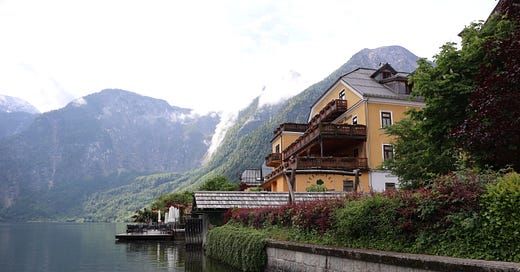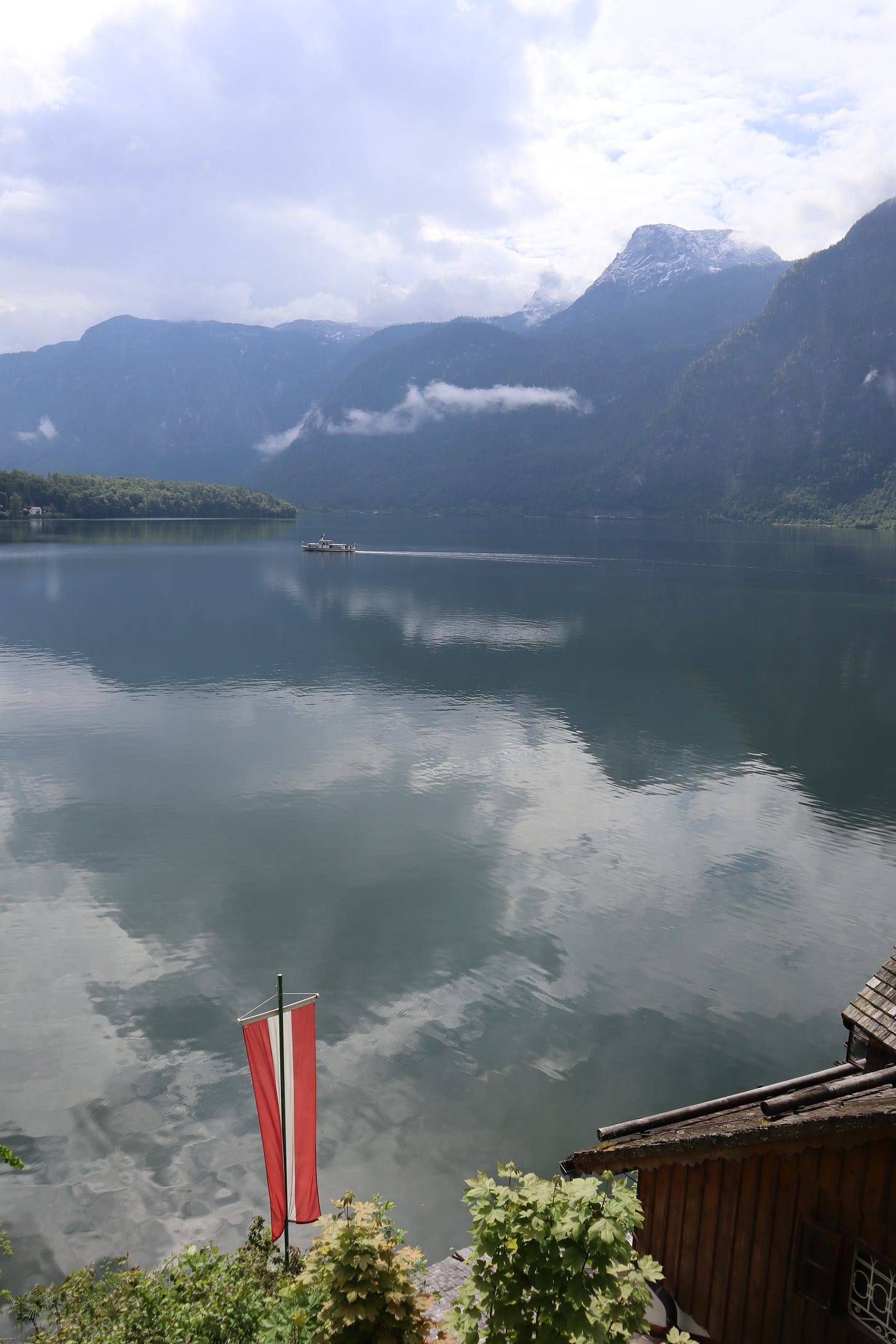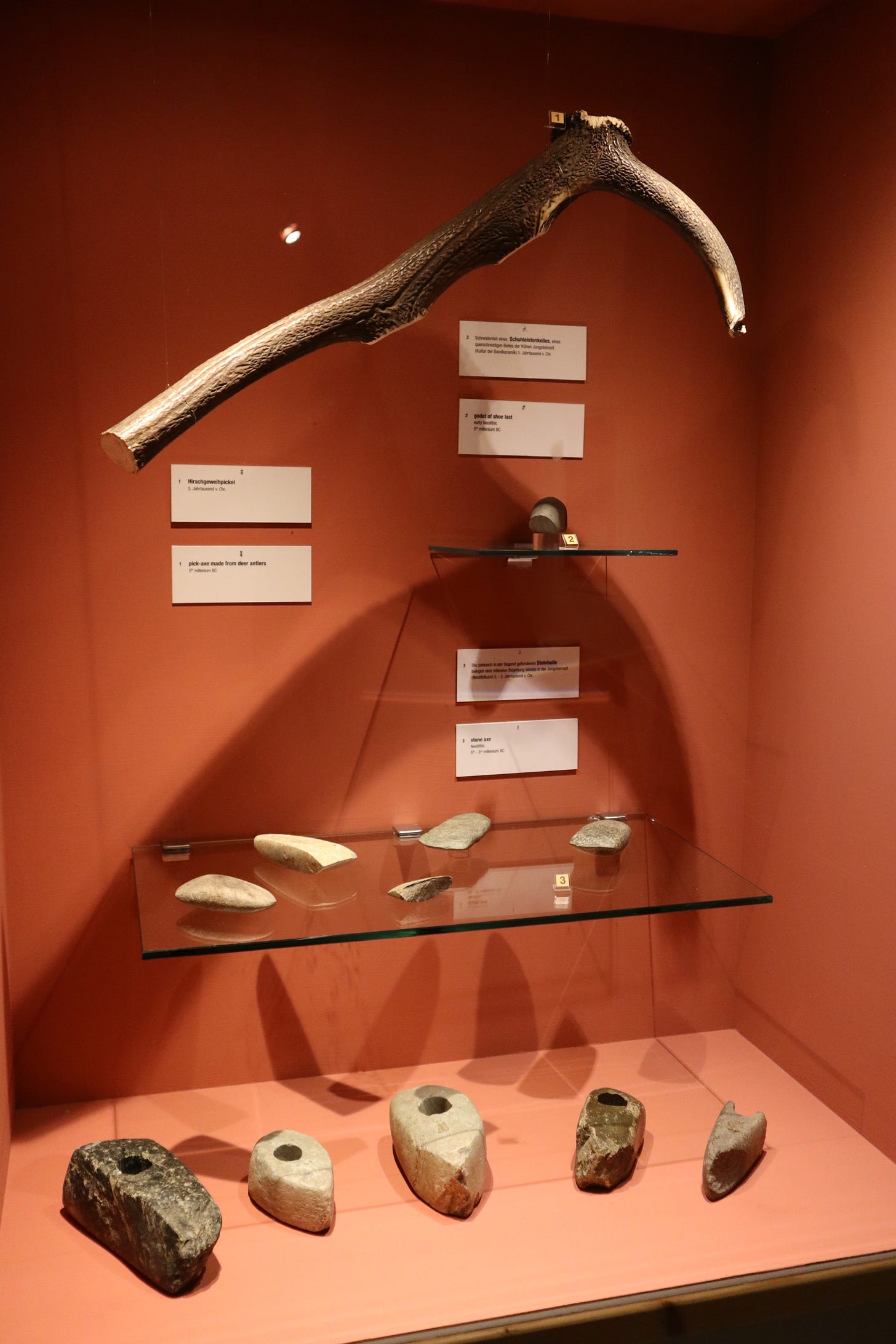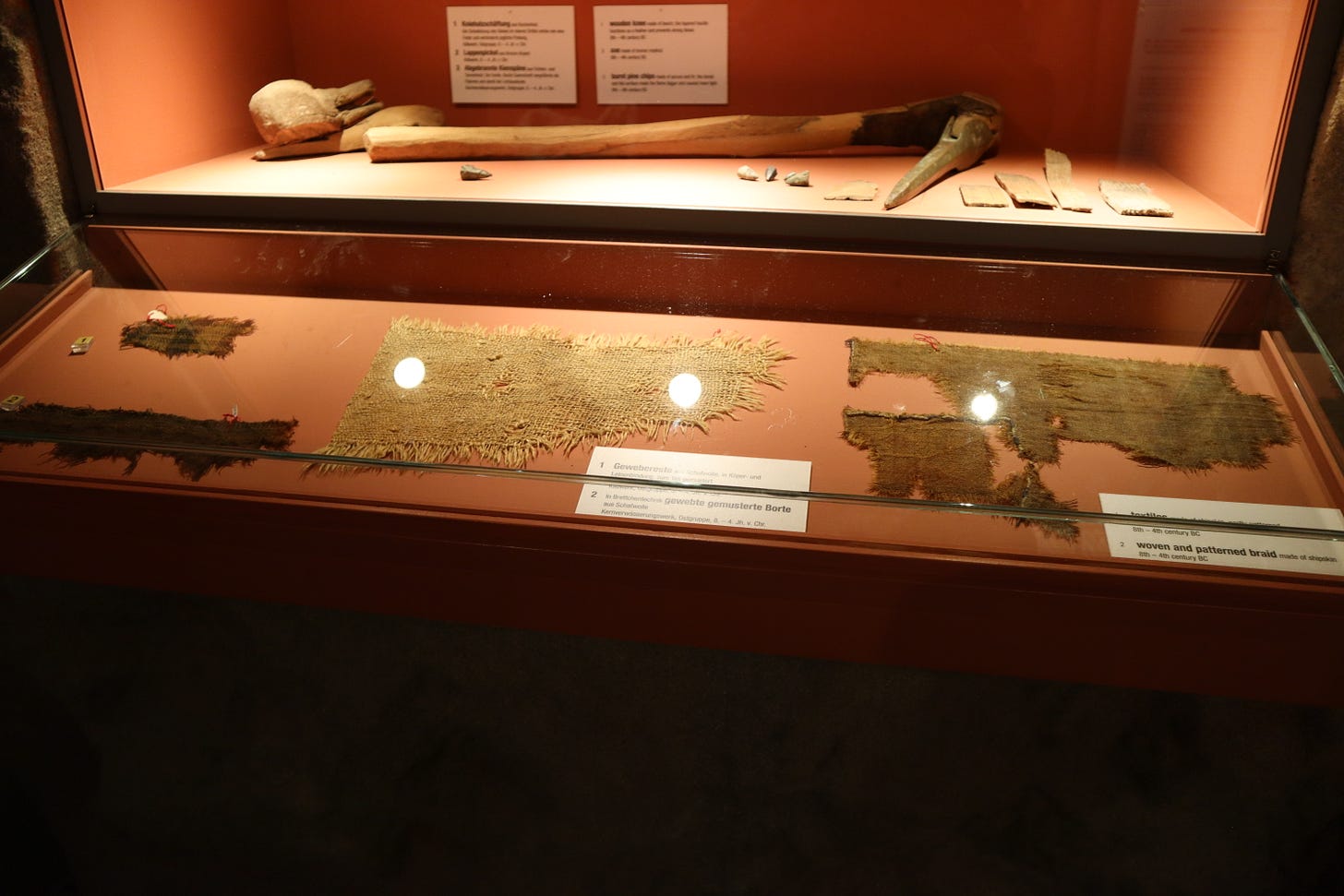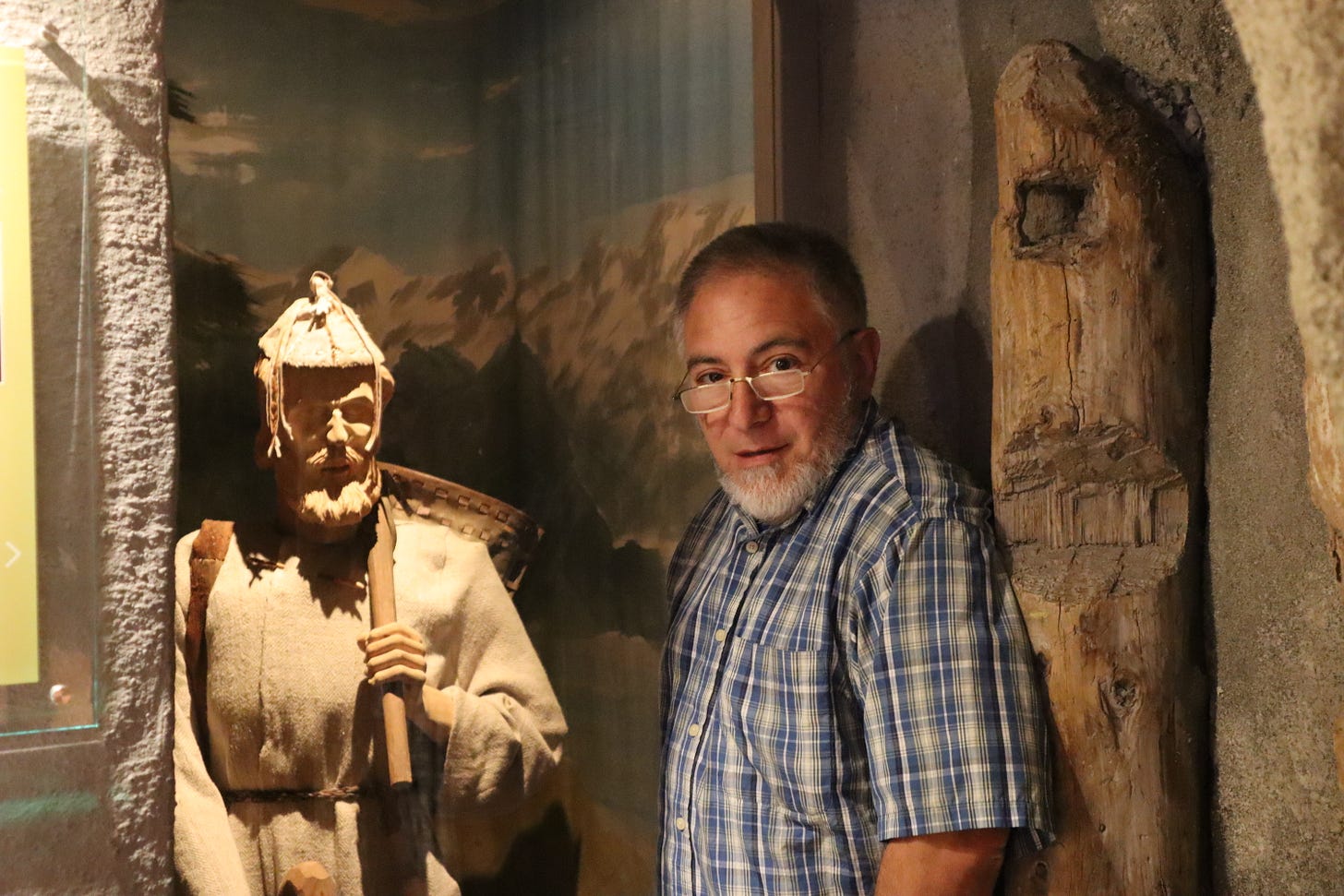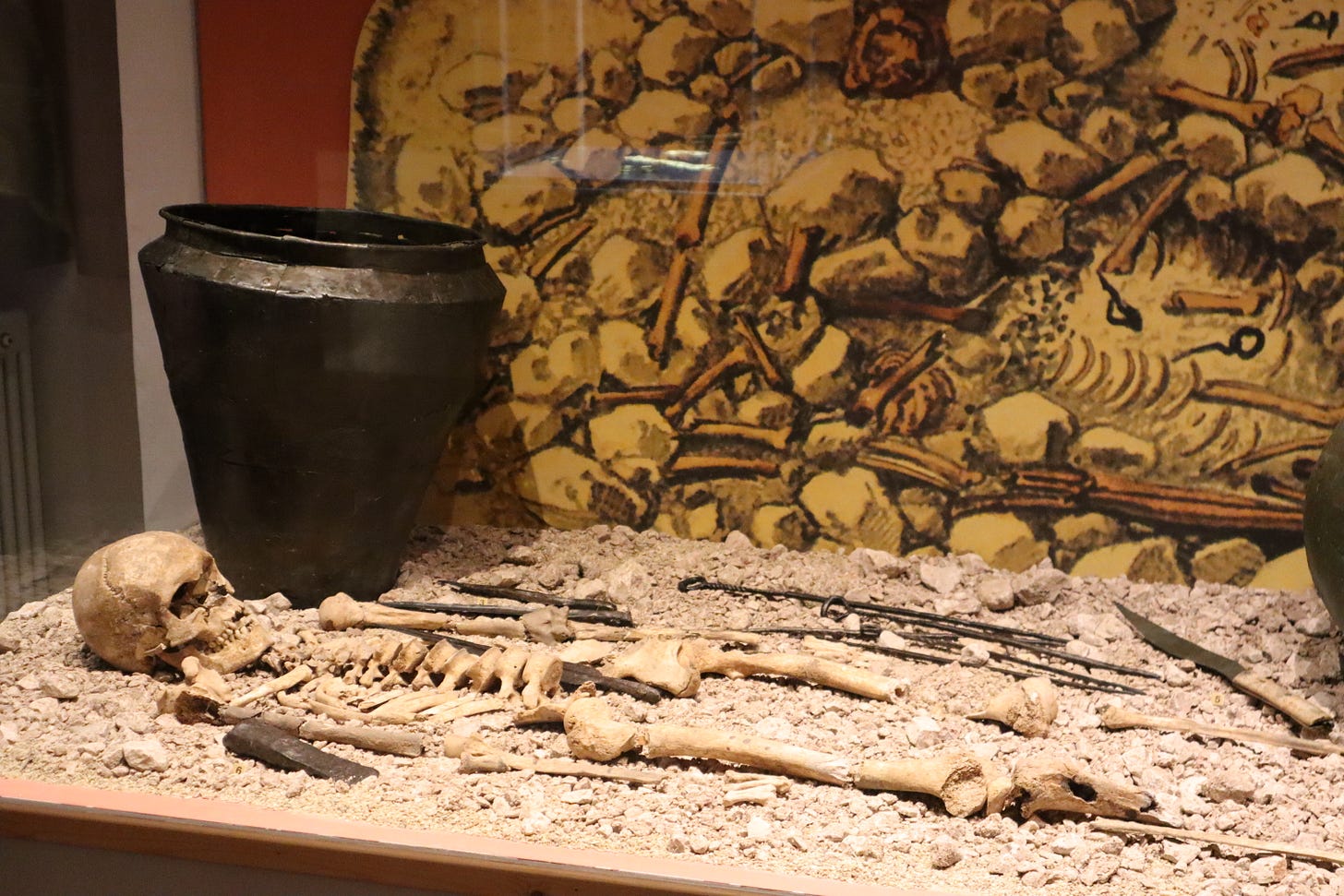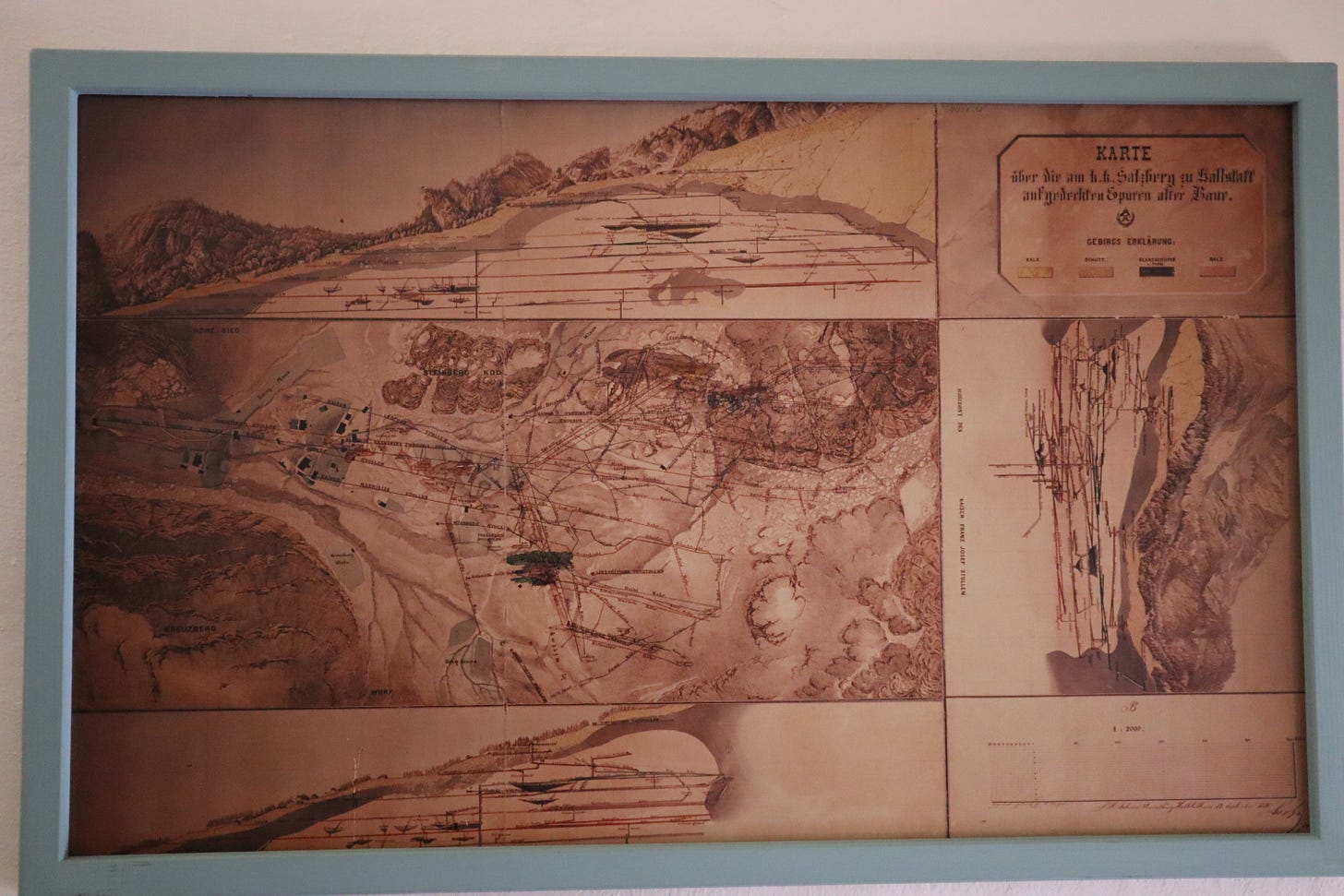Arrived at Hallstatt today for a two-night stay. We walked from a parking lot about a mile from the old town, where only locals and hotel shuttles are allowed to drive on the single narrow street. We're staying at a pension right by the "Marktplatz" of the town. The rooms don't have full bathrooms, but do have balconies overlooking the lake. Our building is the yellow one in the rear of the photo above, and that's our view.
Hallstatt was a destination not only for its scenic value but for its history. The world's first known salt mine is here, in the mountain above the town. Mining rock salt began as early as 5,000 BCE, if you go by the deer-antler salt-axe that we saw in the Hallstatt Museum (that crest with the mining shovel in the very final photo below was bestowed on the town by the Emperor Franz Josef). Later salt-axes had handles of wood and, in their perfected form, heads of bronze.
Here I am with an old salt miner. The fabrics in the photo above him and I, in front of the bronze axe, date from the 8th to 4th centuries BCE. Remarkably, most are plaids. So I guess the lady I spoke with at the Rettl 1868 fashion store in Salzburg was on the level: there really ARE Austrian tartans!
I was very surprised by just how much has been recovered from graves in Hallstatt. I had been aware there was a "Hallstatt Culture", but I had no idea just how much has been recovered and put on display, from not only the bronze and early iron ages, but from Roman times and all the way to the modern era!
I was also not aware that a significant mud and rock-slide in 350 BCE had effectively ended the early "salt boom" of the village. Mining resumes afterwards on a more limited scale. Then, more recently, in the early Middle Ages, mining shifted from rock salt to salt brine, the process still in use throughout the Salzkammergut.

